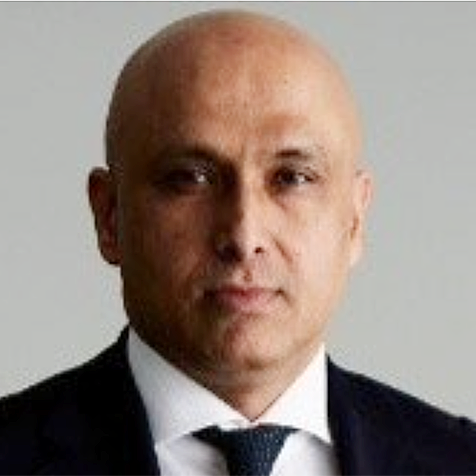 |
|
Four major factors could be said to sum up the global macroeconomic environment at the start of this year:
§ The global economy is experiencing a period of synchronized recovery driven by the US, where growth has been trending upwards since the summer. Europe is no longer hampering global growth, as it did from spring 2011. Japan is making a bigger contribution to global activity, thanks to the strategy pursued over the last year by Prime Minister Shinzo Abe. This trend reflects the predominance of industrialized countries during this recovery phase. The situation for emerging countries is more complex. China no longer holds the position of leader it had until very recently. The refocussing of its growth strategy onto domestic demand has affected numerous emerging countries, which must establish more autonomous sources of growth. These countries will bounce back, but investors will discriminate between these countries more than in the past.
§ The risk of an upturn in inflation is very low. First of all, because commodity prices are falling. This reflects the rise in supply following the rapid increase in prices since the middle of the previous decade. The profitability generated by high prices prompted further exploration and investment. This has resulted in greater supply, which can be seen particularly in oil, where non-OPEC production is rising sharply. This surplus supply is not set to fall in the short-term. As a result, oil prices will not put any pressure on inflation rates. In terms of internal adjustments, tensions on production have fallen a little everywhere, and are not exerting any pressure on wages. Without lasting rises in employment, the period of wage moderation currently affecting industrialized countries is unlikely to come to an end. This downturn in wage growth enables companies to improve their margins and thereby favors investment, if macroeconomic conditions allow.
§ Monetary policies are set to remain extremely accommodative in industrialized countries. Central banks consider that activity levels in industrialized countries are not yet sufficient to cause tension in the near term. While they continue to make this observation, the monetary authorities will keep interest rates very low. The Fed's recent reduction in its asset purchase programme simply reflects the fact that there is now less need to support the US economy at any price.
§ Global risk seems smaller. Since the start of the crisis in 2007-2008, the global economy has lived in fear of a shock that would have created serious and long-lasting problems. Up to now, the authorities have been able to manage these risks. There have been tensions, but no shock. As we move into this year, these risks seem to have leveled off. They have not totally disappeared, but they no longer seem to be on a scale that would create an irreversible situation. In such an environment, economic agents, companies and households are able to extend their economic horizon, which makes them more interested in taking risks and thereby provides strong support to investment.
After a long period of adjustment, which has curbed the imbalances that led to the 2007-2008 crisis, the global economy is now again on a slightly surer footing. This has taken time, and more time will be needed, because economies have not yet converged on a trajectory that would lead to full employment, even in the US. This gradual adjustment has strengthened economic activity, thereby limiting the risk of a renewed slump.
Additional factors to be considered
Other factors play an essential role in explaining this trend. The first is the role that henceforth Europe will play. The European economy was extremely weak from 2011, with the sovereign debt crisis and the adoption of austere budgetary policies.
The debt crisis has gradually been resolved by putting in place institutions capable of managing imbalances within the Euro area. This represents considerable progress, since one of the reasons for the Euro area crisis was the absence of an adequate response in the event of difficulties. These institutions (the European Stability Mechanism, the Treaty on Stability, Coordination and Governance, the forthcoming Banking Union) and the ECB's new role since the arrival of Mario Draghi have reduced the risk associated with the Euro area. Concerns have subsided and as a result, the wait-and-see approach that we had observed has gradually dissipated.
The other factor is that budgetary policies are now exerting less pressure. In 2012 and 2013 in Europe, and in 2013 in the US, the desire to bring budget deficits down very quickly negatively impacted growth by reducing demand to companies. This situation changed in the US after Congress agreed to limit spending cuts. It has also changed in the Euro area with the additional extensions granted to enable budgets to be balanced again without causing a further shock to growth.
New ways of functioning
These factors are positive, but individual countries must also make specific adjustments. Generally, for industrialized countries, private domestic demand (consumption and investment) levels are low, and are unlikely to recover quickly. This can no longer be counteracted by countries' heavy spending policies, since they are all still following restrictive strategies.
Improved competitiveness is undoubtedly the key factor. The objective is to lower production costs in order to be more competitive. The revival in exports creates a new surge in production, driving domestic demand and thereby enabling it to again provide solid support to growth in the long-term. This is what Spain is putting in place.
In the US and the UK, the upturn in domestic demand is the result of the reduction of imbalances, but above all the revival of household debt. Consumer credit rose sharply in 2013. Households were able to consume more, thereby supporting growth.
France and Italy must find drivers able to establish a more virtuous path. The proposals made by President Hollande, centered on companies, could be the trigger that breathes fresh life into the French economy in the long term.
Risks for the global economy have nevertheless not disappeared
While the situation has improved in the heart of the Euro area, the weak growth expected for 2014 will result in stagnation in employment and at least another year of fragility for the job market. This situation does not engender stability, particularly in funding social spending. Should weak growth give rise to additional adjustments, it could lead to a risk of political and social instability. The risk of deflation adds to this concern, because falling prices are generally accompanied by downside pressure on wages.
The other risk relates to monetary policy management. Through forward guidance, central banks are attempting to guide investor expectations concerning future interest rate trends. If the central bank is sufficiently credible and convincing, this can work, as is presently the case. An expectation that interest rates will be raised too soon would in fact negatively impact the economy, hence the central banks' focus on this issue.
This way of managing monetary policy can be seen both in Europe with the ECB and the Bank of England, and in the US with the Fed. However, each of these economies is moving within a specific economic cycle, so the central banks must therefore manage their monetary strategies independently. Consequently and given the fragility of the situation in the Euro area, raising interest rates in Europe too quickly, on the back of tensions in the US, would be catastrophic and would destroy the efforts made up to now. Limiting this risk of contagion will be an important objective for the ECB in the next few months.
The emerging countries mentioned in the introduction are also cause for concern and uncertainty, since every one of them will have to establish a more autonomous growth strategy. This will engender greater heterogeneity than we have seen up to now.
After six difficult years, the global economy is returning to a more solid and independent growth trend. Its trajectory is not, however, sufficiently strong that we will see a rapid convergence towards full employment. Further changes will unsettle economic activity in the next few years, such as the opening up of China's financial sector. The global economy will have to find a new balance, and its capacity to adapt must remain strong. This is the lesson we have learned from recent events: the economy changes shape, and must be able to adapt quickly.
Philippe Waechter is the chief economist at Natixis Asset Management









